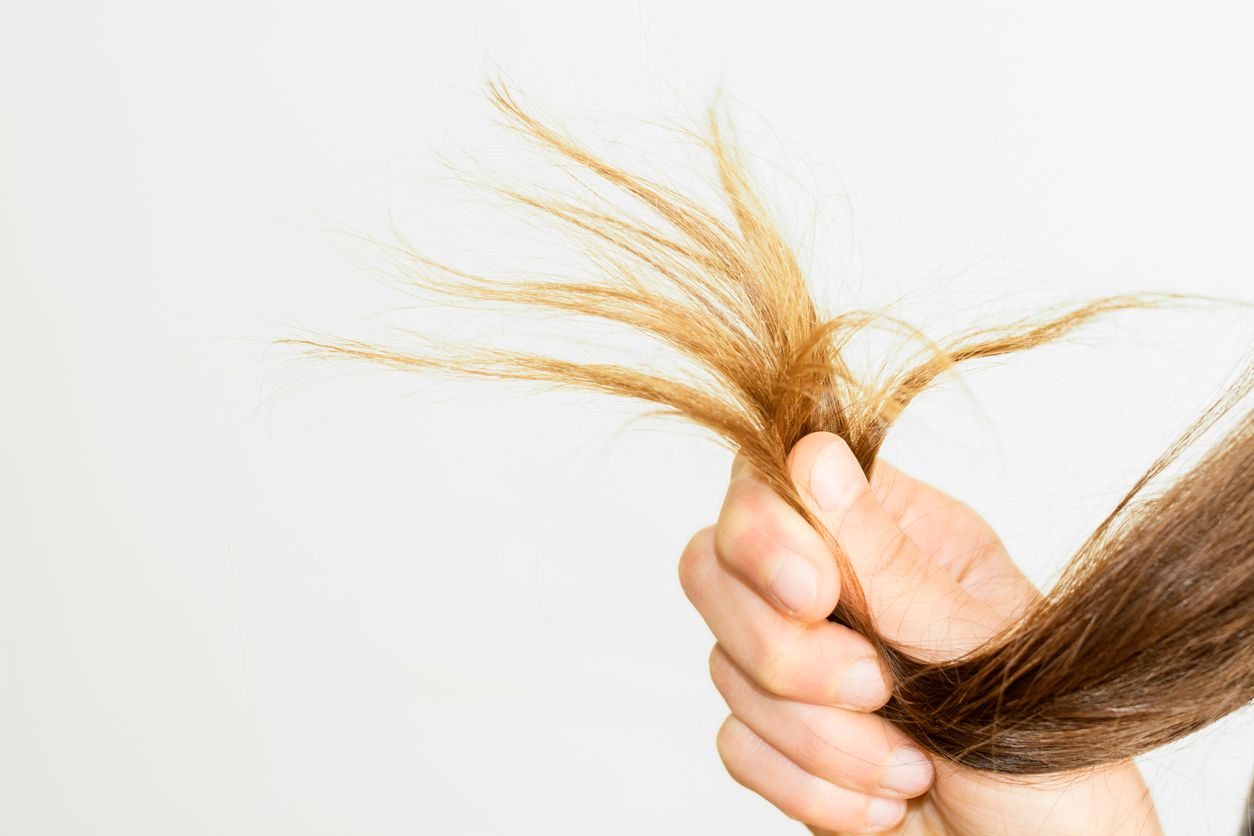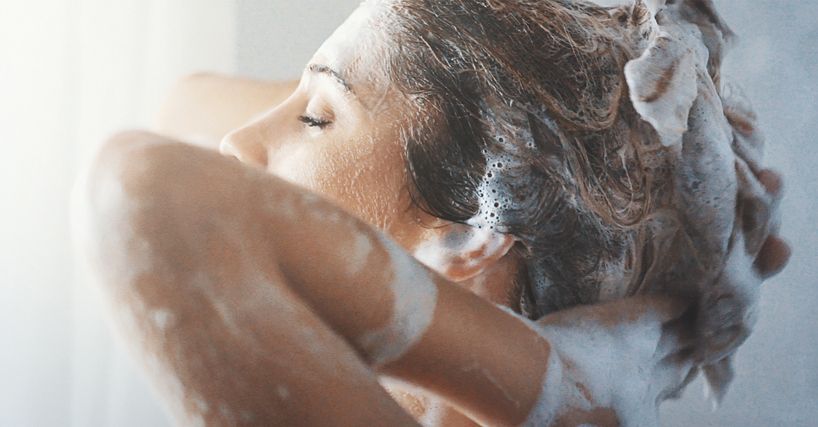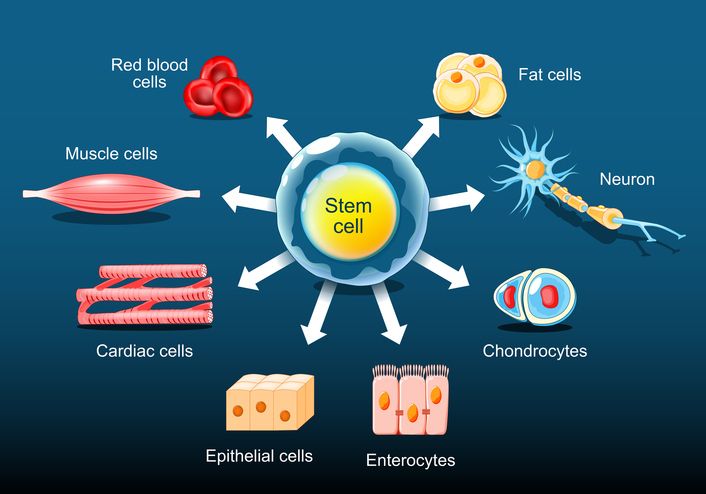
Author: Natalie Ng|Updated: 27 May 2025
If you’ve been spotting more hair than usual on your brush or around the house, it doesn’t always mean the same thing. Sometimes hair breaks off, and other times it sheds from the root. Both are common, but they happen for different reasons. The signs of hair breakage vs hair shedding can be easy to miss if you’re not sure what to look for. Breakage often shows up as shorter, uneven strands, while shedding usually involves full-length hairs that fall out naturally. Hair breakage tends to happen where your hair gets the most stress— from heat styling, tight hairstyles, or chemical treatments. Shedding is more even and often follows a natural cycle. Let’s take a closer look at the key differences—your hair might be telling you more than you think.

Difference Between Hair Breakage and Hair Shedding 1: Length of Hair Strands

Length of broken hair
Hair breakage often shows up as short, uneven strands that stand out from your usual hair length. These broken pieces can range from under an inch to a few inches long, and they often have split or frayed ends. You’ll usually notice them around areas that go through frequent styling, brushing, or tension—like your part line, crown, or edges.
This type of breakage happens when the hair shaft becomes weakened. That can come from heat styling tools, frequent chemical treatments, or tight hairstyles that cause repeated stress on the same areas. Over time, the hair loses strength and snaps, especially when it’s already dry or damaged.
Length of shed hair
Shed strands are full-length and match the length of your current hair. These hairs usually have a tiny white bulb at the end, which shows they’ve naturally fallen out from the root. They come from the hair follicles and are part of the normal hair growth cycle.
Unlike breakage, which shows up in specific spots, shedding happens more evenly across the scalp. It’s part of the natural process of hair renewal unless something triggers excessive hair shedding—like hormonal changes, a stressful event, nutritional deficiencies, or certain medications.
You can compare the hair you’ve lost by looking at:
• Length: Shed hairs are long; broken hairs are much shorter.
• Ends: Shed hairs have a white bulb; broken strands have blunt or split ends.

Difference Between Hair Breakage and Hair Shedding 2: Appearance of Hair Ends

Ends of broken hair
Broken strands have a distinct appearance that sets them apart from shed hair. These hairs usually show sharp, uneven breaks or clear signs of damage at the ends. You might notice split ends, jagged tips, or fraying that makes the strand look worn or rough. These broken ends form when the hair shaft becomes weak—often due to excessive heat styling, tight hairstyles, chemical treatments, or brushing too aggressively.
This kind of damage usually doesn’t involve the root. Instead, the break occurs somewhere along the strand, leaving the ends looking unfinished or snapped off. If you place a few of these strands against a white background, the damage is easier to spot—shorter lengths, no root bulb, and a rough texture at the tip.
Ends of shed hair
Shed strands fall out from the follicle as part of the natural hair growth cycle. These hairs are full-length and often include a small, white, bulb-shaped root at one end. The opposite end of the strand tapers gently, creating a smooth and gradual finish. This club-shaped end shows that the hair wasn't damaged—it simply reached the end of its cycle.
When you run your fingers along a naturally shed strand, it feels smooth and consistent from root to tip. The last quarter inch narrows slightly, with no signs of splitting or fraying.
You can compare the two by checking:
• Broken hair: no root bulb, rough or frayed ends, uneven length
• Shed hair: visible root bulb, smooth tapered ends, full length
Looking closely at the shape and condition of the ends gives you a clearer view of whether you’re dealing with damage or natural hair shedding.
Book Now to Experience
F8 Hair Regrowth Treatment
1 Minute Self-Registration
Date should not be before minimal date

Difference Between Hair Breakage and Hair Shedding 3: Location of Hair Loss
Areas where breakage appears
Hair breakage tends to show up in specific areas rather than evenly across the scalp. You’ll usually see these broken strands around places where the hair experiences more stress—such as the crown, edges, or along the hairline. These are often the spots most affected by tight hairstyles, frequent brushing, or heat styling tools.
Breakage happens mid-shaft or further down the strand, not from the root. Because of this, the hair loss looks scattered and uneven. You might notice more short strands on your shoulders, pillow, or clothing after styling or washing. The areas affected by breakage often feel rougher to the touch and may look more frizzy or thin in certain spots.
Areas where shedding occurs
Shedding follows a different pattern. Hairs that fall out naturally tend to come from all over the scalp in a more even way. These strands fall out with the root still attached and are often found in your brush, shower drain, or after running your fingers through your hair.
Unlike breakage, shedding doesn’t leave behind scattered patches of short hair. If you’re seeing long hairs with a white bulb at the end appearing consistently across your scalp, that’s most likely part of the normal growth cycle.
Paying attention to where the hair is falling from helps you separate signs of hair breakage from normal hair shedding. If you notice thinning in concentrated areas like the temples or part line, that may suggest another issue worth discussing with a healthcare professional.

Difference Between Hair Breakage and Hair Shedding 4: Root Presence on Fallen Strands
Roots missing on broken strands
Broken hair doesn’t fall from the root. Instead, it snaps somewhere along the shaft, so you won’t see any root attached. When you look closely at these strands, they appear cut or torn, with uneven ends and no visible bulb. These hairs are often the result of physical stress—like brushing wet hair, using heat styling tools without heat protection, or wearing tight hairstyles that put strain on the same areas over time.
You’ll usually find these broken strands in areas where your hair gets handled the most. They don’t follow any seasonal pattern and can show up at any time if your hair care routine is damaging the structure of the hair shaft. The lack of a root is a clear sign that the strand didn’t fall out naturally—it broke.
Roots attached to shed strands
Shed hairs, on the other hand, include the root. These strands often have a small, white or clear bulb at one end, showing they were released from the follicle during the final stage of the hair growth cycle. This bulb is round and smooth—often called a “club root”—and is not a cause for concern.
The presence of these bulbs means the strand completed its natural growth phase and is being replaced by new hair. If you notice more of these shed hairs than usual, it might be linked to factors like stress, hormonal changes, certain medications, or nutritional deficiencies.
To check your own strands, place a few on a white surface and look at the ends. If the majority have white bulbs and match your hair length, they’ve likely shed from the root. If they’re missing the bulb and look jagged or short, you’re dealing with breakage.

Difference Between Hair Breakage and Hair Shedding 5: Timing and Seasonal Patterns
Timing of breakage
Hair breakage doesn’t follow a specific timeline or season. It can happen any time of year, especially when the hair is exposed to repeated stress. Using heat styling tools too often, wearing tight hairstyles, or undergoing chemical treatments can all weaken the hair shaft, leading to breakage. You might notice more broken strands after washing, styling, or brushing—especially if your hair feels dry, brittle, or tangles easily.
Breakage tends to remain steady over time unless your hair care routine changes. It doesn’t come in cycles and doesn’t increase or decrease with the seasons. Instead, it reflects the current condition of your hair and how it’s being treated day to day.
Timing of shedding
Hair shedding, on the other hand, can change with the seasons and follows a more predictable pattern. Shedding increases in certain months due to shifts in the hair growth cycle, influenced by weather and internal body changes.
• Summer: Shedding may increase as the scalp adjusts to heat and humidity.
• Fall: The highest rates of hair shedding often occur during this time, with up to 100 strands a day considered normal.
• Winter: Shedding slows, but dry indoor air may increase hair breakage instead.
• Spring: Shedding gradually picks up again as new growth pushes older strands out.
Book Now to Experience
F8 Hair Regrowth Treatment
1 Minute Self-Registration
Date should not be before minimal date

Difference Between Hair Breakage and Hair Shedding 6: Texture of Affected Hair
Texture of broken hair
Broken hair strands often feel rough, uneven, or dry when touched. These pieces tend to have jagged edges, and their texture is inconsistent from root to tip. You might notice that they catch on your fingers or feel coarse when brushing. This roughness comes from damage to the hair shaft, often caused by excessive heat styling, chemical treatments, or physical friction—like tight ponytails or brushing too hard.
The texture of broken hair is a direct sign of weakened structure. It may also look dull or frizzy, especially at the ends, and feel brittle when handled. These changes are most noticeable when damage builds up over time without enough recovery or protection in your hair care routine.
Texture of shed hair
Shed strands feel smooth and consistent from end to end. Since they fall out naturally from the follicle, they keep their original texture and maintain the same thickness throughout. When you run your fingers along a shed hair, it glides easily without any roughness or snagging.
These hairs often appear healthy, even if you’re experiencing a higher rate of hair fall. The root bulb at the end remains intact, and the surface of the strand stays even and soft. The texture helps confirm that the strand wasn’t broken, but simply reached the end of its natural growth cycle.
Touching the strands can reveal:
• Broken hair: rough texture, irregular thickness, jagged or frayed ends
• Shed hair: smooth surface, uniform feel, full-length strand with a round end

Difference Between Hair Breakage and Hair Shedding 7: Underlying Causes and Triggers
Causes of hair breakage
Hair breakage is often linked to external stress placed on the hair strand. These triggers weaken the hair shaft and make it more likely to snap, especially in areas that are handled frequently. Common causes include:
• Heat styling tools like blow dryers, flat irons, and curling wands used without heat protection
• Chemical treatments, including bleaching, relaxing, perming, or coloring
• Tight hairstyles that pull on the same sections of hair repeatedly, such as braids or ponytails
• Rough handling, such as brushing wet hair aggressively or using fine-tooth combs on tangled strands
• Environmental factors, like harsh sun exposure, wind, or chlorinated water
These external sources of damage gradually wear down the hair’s strength, especially when paired with a lack of moisture or protective care.
Causes of hair shedding
Hair shedding usually results from internal changes or imbalances in the body. These can affect the hair growth cycle and lead to more strands falling out at once. Common triggers include:
• Hormonal changes, such as those during pregnancy, menopause, or thyroid issues
• Nutritional deficiencies, particularly low iron, protein, or vitamin D
• Certain medications that affect the hair follicles or cause temporary shedding
• High fever, major illness, or surgery, which can lead to temporary hair loss
• Stressful events, often followed by shedding two to three months later due to a disruption in the growth cycle
• Genetic predisposition to conditions like hereditary hair loss or gradual thinning over time
While breakage is usually caused by damage to the hair itself, shedding reflects changes inside the body or at the follicle level.

Difference Between Hair Breakage and Hair Shedding 8: Recovery and Growth Patterns
Growth after breakage
Hair that breaks mid-shaft doesn’t recover in the same way shed hair does. Once a strand snaps, it can’t be repaired—it needs to grow out fully from the root again. You’ll usually see uneven lengths and thinner ends until the broken areas are trimmed away. Recovery depends on how well you protect the new hair as it grows in. That includes reducing heat styling, limiting chemical treatments, and using a gentle hair care routine that supports the hair shaft.
Growth from breakage can be gradual, and areas that were repeatedly stressed—like the hairline or crown—may take longer to regain their normal fullness. Regular trims every 8 to 12 weeks help remove damaged ends and maintain the appearance of healthy hair as it grows.
Growth after shedding
Hair that sheds naturally makes way for new hair growth right from the root. After a strand completes its cycle and falls out, the follicle begins producing a new one. You might notice short, soft strands of new hair appearing along your hairline or part within a few weeks or months.
Shedding recovery depends on what caused it. If it was linked to a temporary issue—like a stressful event or high fever—new hair often starts to grow again after the body readjusts. This process can take between three to six months. For causes like nutritional deficiencies or hormonal changes, improvement usually comes after the underlying issue is addressed.
Growth patterns show:
• Breakage: uneven ends, no root involved, needs trimming to manage appearance
• Shedding: new growth from the root, often visible as soft baby hairs
Book Now to Experience
F8 Hair Regrowth Treatment
1 Minute Self-Registration
Date should not be before minimal date

Everyday Habits That Lead to Hair Breakage and Excessive Shedding
Habits that damage the hair shaft
Some daily routines quietly damage the hair shaft over time, leading to broken hair strands that shorten your length and reduce your overall hair health. Repeated exposure to high temperatures and rough handling wears down the outer layer of each strand, making it more prone to snapping.
Common breakage-causing habits include:
• Using heat styling tools without heat protection
• Brushing or combing wet hair with force
• Wearing tight hairstyles that pull on the same sections daily
• Over-washing, which strips the hair of natural oils
• Skipping regular trims, allowing split ends to travel upward and weaken the strand
These practices can slowly cause the ends to thin out, reducing the hair’s ability to hold its natural volume and grow to its full potential.
Habits that contribute to excessive hair shedding
Shedding often comes from internal triggers, but lifestyle factors play a role too. When the body is under pressure—physically or emotionally—it may shift more hairs into the shedding phase.
Shedding-related habits and factors include:
• High stress levels sustained over weeks or months
• Not getting enough sleep or proper nutrition
• Crash dieting or sudden weight loss
• Using hair products with harsh ingredients that irritate the scalp
• Not addressing underlying health issues or hormonal changes
These triggers don’t just cause a few extra strands to fall—they may disrupt the natural hair growth cycle, leading to gradual thinning, reduced hair density, and a slower return of new hair growth.

How to Support Healthy Hair Growth Daily
Everyday habits that protect overall hair health
Supporting hair growth starts with simple, regular actions that protect the scalp and hair strands from unnecessary stress. These steps don’t need to be complicated, but they should be consistent to help reduce hair breakage and prevent excessive hair shedding.
Focus on these everyday practices to maintain healthy hair:
• Use a wide tooth comb to detangle, especially when hair is wet
• Apply heat protection before using blow dryers or other heat styling tools
• Keep scalp clean, but avoid overwashing—2 to 3 times a week is enough for most
• Choose gentle hair care products free of harsh sulfates or alcohol
• Trim every 8 to 12 weeks to remove split ends and reduce breakage
Nutrition and lifestyle support for new hair growth
Hair growth depends on internal health as much as external care. The hair follicles need a steady supply of nutrients to stay active and support regular growth cycles. A balanced diet supports new hair growth and helps the body recover from any temporary triggers like stress or illness.
Include these daily habits to support long-term hair density and hair volume:
• Eat enough protein—hair is made of keratin, a type of protein
• Ensure good intake of iron, zinc, and vitamins like B12 and D
• Drink enough water to keep scalp and strands hydrated
• Get 7–9 hours of sleep each night to support healthy hormone function
• Manage stress levels with regular physical activity and rest

F8 Hair Regrowth Treatment: Support for Breakage, Shedding, and Scalp Health
Hair breakage and shedding can be frustrating to deal with—especially when they keep coming back no matter how careful you are with your hair care routine. When home remedies aren’t enough, targeted treatments can offer extra support to help restore healthy hair from the root.
The F8 Hair Regrowth Treatment is designed to improve overall hair and scalp health by working deep into the follicle level. It’s a non-invasive solution for those experiencing signs of hair breakage vs hair shedding, and helps create the right environment for stronger, fuller-looking hair.
How F8 Hair Regrowth Treatment works
The treatment uses low-energy laser technology combined with a nutrient-rich hair growth serum to support the hair follicles and papilla—the structures responsible for growing each strand.
Here’s how each session works:
• A professional hair expert examines your scalp and hair follicles using magnified imaging to assess hair loss areas and causes
• Low-laser energy is gently emitted across the scalp to activate inactive follicles and stimulate capillary strength for improved microcirculation
• The therapist applies a high-quality hair growth serum, which is absorbed more efficiently after laser treatment. This helps cleanse, hydrate, and rebalance the scalp for healthier regrowth
How this helps with hair breakage and shedding
By supporting the function of the hair follicles and improving nutrient delivery to the scalp, F8 helps address both common causes of hair breakage and excessive hair shedding:
• Strengthens weak hair follicles and promotes new hair growth
• Boosts blood circulation around the scalp to nourish the hair shaft
• Helps control sebum, unclogs pores, and reduces scalp inflammation
• Improves scalp hydration, creating better conditions for the hair growth cycle
Why choose F8 Hair Regrowth Treatment
• Non-invasive and safe for most users
• Suitable for both women and men experiencing hair fall, thinning, or weakened hair strands
• No downtime needed—normal routines can resume after each session
• Can be used alongside a healthy hair care routine to enhance long-term results
A full treatment plan typically lasts 3 to 6 months, with regular sessions recommended to maintain results and support ongoing hair recovery.
If you're seeing signs of broken hair strands, split ends, or increased hair fall, this treatment offers a proactive way to improve both your scalp condition and overall hair quality.
Book F8 today and take the next step toward stronger, healthier hair.
F8 Hair Regrowth TreatmentBook Now to Experience
F8 Hair Regrowth Treatment
1 Minute Self-Registration
Date should not be before minimal date
FAQ
1. Can stress cause both hair breakage and excessive hair shedding?
Yes, stress can lead to both hair breakage and excessive hair shedding, but in different ways. High stress levels can push hair follicles into the resting phase, triggering shedding through a condition called telogen effluvium. At the same time, stress may also weaken the hair shaft by disrupting scalp health, leading to broken hair strands that feel dry and brittle. Managing stress and supporting your body with proper rest and nutrition can help restore overall hair health and reduce both shedding and breakage.
2. Is there a difference between hereditary hair loss and hair shedding?
Hereditary hair loss, also known as androgenetic alopecia, is a genetic condition that causes gradual thinning and a receding hairline over time. It affects hair density and leads to permanent changes in hair growth patterns. Regular hair shedding, however, is part of the natural growth cycle and usually doesn’t result in visible thinning unless it becomes excessive. If you’re unsure whether you’re experiencing hereditary hair loss or normal shedding, consulting a healthcare professional can help identify the underlying cause.
3. Can hair fall be reduced by changing my shampoo or conditioner?
Certain shampoos and conditioners can help reduce hair breakage or irritation that leads to hair fall, especially if they are formulated to support the scalp and strengthen the hair shaft. However, switching products alone may not be enough to stop excessive hair shedding if the cause is internal, such as hormonal changes, nutritional deficiencies, or a disrupted hair growth cycle. Look for hair care products that are gentle on the scalp, free of harsh sulfates, and designed to promote overall hair health.
4. How long does it take to see new hair growth after excessive shedding?
After excessive hair shedding, it usually takes between six to nine months to see visible new hair growth, depending on the cause and whether it has been resolved. The follicles need time to reset and re-enter the active growth phase. During this period, maintaining a balanced diet, supporting scalp circulation, and avoiding damaging habits like heat styling or chemical treatments can help improve long-term hair volume and density.
5. Do environmental factors contribute to hair breakage or thinning?
Yes, environmental factors can play a big role in both hair breakage and gradual thinning. Exposure to UV rays, pollution, and harsh weather conditions can damage the hair shaft and dry out the scalp, making strands more prone to breakage. In humid climates, buildup of sebum and sweat can also clog follicles, affecting scalp health and potentially leading to increased shedding. Wearing hats, using heat protection sprays, and keeping the scalp clean can reduce the impact of these external stressors.
Recommended Articles
COPYRIGHT© NEW BEAUTY MANAGEMENT LIMITED 2025. ALL RIGHT RESERVED.




